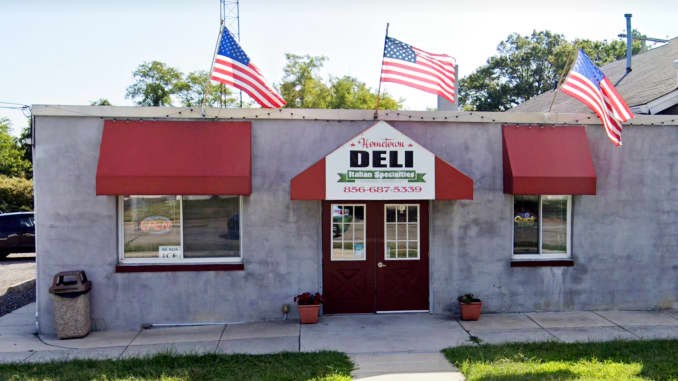As a banker, I am trained to think about the world in terms of risk. But sometimes meaningful discussion gets hidden behind all the charts, jargon and PowerPoint slides. I’ve found the best way to cut through all the noise is to ask, “What keeps you awake at night?”
I love that question because the demons that keep us awake at night are probably the ones that need our thoughtful attention in the daytime.
What keeps investors awake at night these days? If we own stocks, we are showing a lot of green. If we own a house, we are probably seeing nice appreciation. The economy seems to be recovering with retail spending up almost 10% in March. And over half of the country has now been vaccinated. It’s all good. Right?
When everything looks great, it’s prudent to look at the risks, especially if they are increasing. I don’t suggest trying to time the market, but it’s a good idea to make sure we’re confident in our investing plan. Here are five signs of growing risk to stress test your confidence.
First, I find news of a New Jersey deli with $35,000 of sales trading at a $100,000,000 market capitalization to be impossible to rationalize. Your Hometown Deli has only one location in Paulsboro, New jersey. It trades under the symbol HWIN and apparently has an amazing pastrami according to the CEO. Here’s a picture of this hundred-million-dollar restaurant:

Second, we’ve all probably made some progress understanding Bitcoin. But the real mind blower for me is Dogecoin. This crypto currency was started by two engineers as a joke. Unlike Bitcoin, there is no scarcity because there can be an unlimited number of Dogecoin’s created. And yet, the value of Dogecoin has recently exceeded $50,000,000,000.
Let’s make it personal. Dream that you had put $10,000 in Dogecoin on December 31, 2020. It would be worth $821,000 on April 19, 2021. There is nothing in my investment analysis tool box that justifies the price.
Third, and possibly related to Dogecoin and the deli, is Modern Monetary Theory (MMT). The premises seem to suggest governments that control their own currency can spend freely with little fear of inflation or rising debt. They can always create more money to pay off debts in their own currency. Inflation is not a big concern.
We are witnessing this experiment right now in our country as we reach unprecedented levels of debt. If the Fed and congress are wrong about the MMT experiment, what would a debased dollar do to our investment plan?
Fourth, I don’t know about where you live, but in Montana it is getting tough for the private sector to compete with unemployment benefits for jobs. Economist David Bahnsen estimates the current value of unemployment benefits is around $19 an hour. Paying people close to $20 an hour not to work makes it tough on small businesses like Black Cat Bakery in Missoula that currently has four openings and can’t even get applications.
As our work ethic erodes will our economy continue to produce outsized returns for investors?
Finally, are the frequent attacks on capitalism that seem to be gaining traction. Some polls like one in Business Insider suggest 70% of Millennials would vote for a socialist candidate. Debt loads are one frequently cited reason.
Efforts to improve diversity in business may be another contributor. I think I wrote my first Affirmative Action policy in 1980. Everyone I know supports equal opportunity. But diversity philosophy has changed from the vision Martin Luther King Jr. gave us. Some of the current thinking suggests capitalism is the problem because it leads to inequality.
This is not a forum for solving complex diversity issues or younger generation debt loads, but for investors, even a small risk of destroying the goose that lays the golden egg is a concern.
Response to the Current Risk Environment
As we identify the risks in our investment plan, the second step is to evaluate if we need to take any actions. Here are a few suggestions.
Remember the Basics. Do you have enough set aside in cash, bonds and other safe investments to avoid panic selling if the stock market dropped 50% tomorrow?
We know the market is erratic and experiences severe drops. With Dogecoin at fifty billion, we have reason to suspect some parts of the market are in a bubble. But we don’t know about the broader market. Rather than try to time the market, I have found the best approach is to stay diversified and maintain sufficient safe assets to ride out the downturns.
Truth Wins. I think the clash of ideas is a good thing because truth generally wins the argument. For example, one of my sons surprised me the other day when I asked him what he had learned as a child about money. He said Disney’s Duck Tales taught him about inflation. I found the episode in this video.
In the video, Donald’s nephews find a money replicator machine. Scrooge educates them on how destructive inflation is when you mint new money. If you have an extra three minutes, I think you’ll find it a priceless counterpoint to MMT.
We can all hope MMT will not bring hyperinflation, but I’m considering increasing my asset diversification a little by adding a commodities position. That minor change, along with some I-bonds, should give me a little more inflation protection to offset this risk.
Business Judo. Capitalism is periodically attacked by various political interest groups. However, the argument for capitalism is strong. For most of human history, the rich got richer and the poor got poorer. It wasn’t until Capitalism was widely practiced that the rich got richer and the poor got richer.
In addition, businesses often make positive and substantive changes when criticized. For example, we have more diverse board rooms than a few years ago. On other issues, they may donate money to critics or start a symbolic effort to pacify concerns. The overwhelming evidence that Capitalism grows wealth for all and, public relations skills effective at parrying jabs, convince me the ability to create shareholder value is not as big a risk as headlines might suggest.
Longer Wait Times. I’m hopeful the voices of small business owners around the country will eventually be heard about the disincentive excessive unemployment benefits are creating. As we wait in line longer for services because no one is willing to take a $12.00 an hour job, perhaps sanity will return.
Life was simpler when I was raising five children and they were what kept me awake at night. Today I’m aware of these and other risks. Perhaps it’s a natural part of getting older. But as I reflect on it all I can relate to that line in a Toby Keith song:
“I wish I didn’t know now what I didn’t know then.”
Joe Kesler

A country cannot reach financial equality by creating a boogeyman ethnicity…capitalism succeeds as long as ALL it’s people also work…what keeps me awake at night is soft totalitarianism.
Great article Joe. There is a lot to consider about “what keeps me up at night” and maybe what should keep me up at night. The epidemic has certainly made me think more about how our society deals with disaster at a world wide level. Even before the epidemic organizations like World Vision, The Salvation Army, Local Food Banks, Meals on Wheels, (insert your favorite charity) had no trouble finding people that needed assistance. For retirees, it seems outliving your resources is a common theme. With the aging baby boomer population many are thinking about the same for their parents as well. One sure way to feel better about yourself is to do something good for someone else.
Excellent advice Brian! Thanks for some good perspective.
Joe
The $19 per hour benefit equivalents for unemployment seem implausible to me. Can anyone demonstrate this with real life numbers? What are the qualifications and time limits before the benefits run out?
Thanks,
Dave Baese
Good question David. I know in the Montana markets it is a crisis trying to find people willing to give up the unemployment benefits to come and work. There is just not a willingness to do it based on the economics. But I have limited knowledge of the rest of the country. However, the economist I referenced does seem to be consistent with other information out there. Here is a link to a Wall Street Journal article saying how hard it is to get the unemployed to take a job: https://www.wsj.com/articles/covid-relief-makes-help-impossible-to-find-11619208369?mod=opinion_lead_pos5 I hope this helps answer your question. Thanks for the question.
Joe,
I collected unemployment compensation once for about 8 weeks while I was considering other job offers. During that 8 weeks I estimate I did repairs and maintenance to our home and property that would have cost me about $2800 if I’d hired a contractor. Those savings were also income in the form of a forgone expense.
Dave
I’m not sure how the economist calculated the $19 an hour, but I assume Medicaid was a part of it. Probably food stamps etc., I’ll see if I can find out how he came up with the $19, but the people I know on unemployment are getting benefits way beyond the unemployment checks. I have talked to bankers in Montana and they are pulling their hair out trying to get anyone to take entry level positions due to the comparative advantage of staying unemployed. Sorry I don’t have all the data, but I think the point the economist was making is a good one. Things were probably different back when you were in that program. Thanks again for the comments!